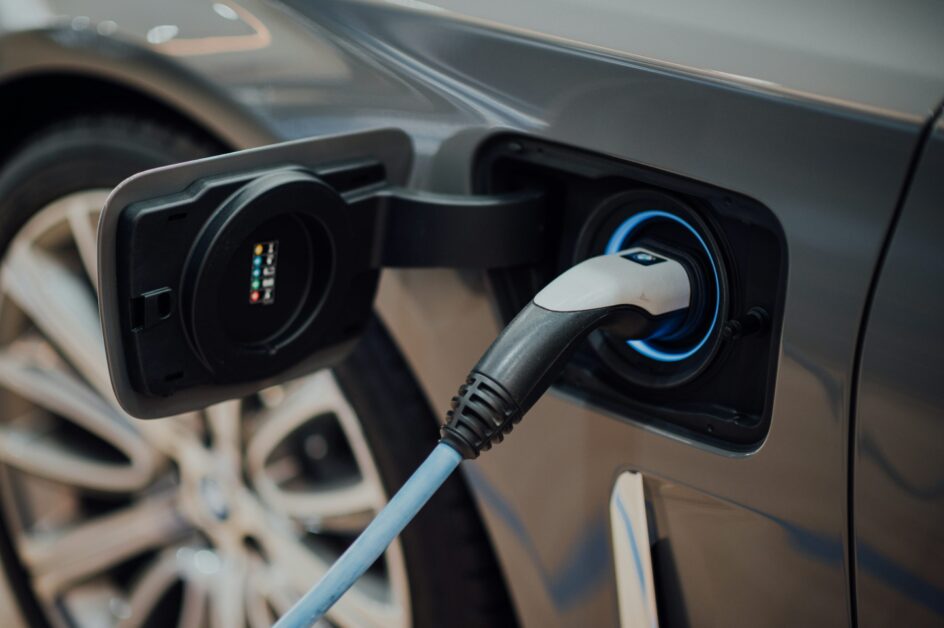The U.S. electric vehicle (EV) market kicked off 2025 with notable growth, driven by new models and expanding options from legacy automakers. According to Kelley Blue Book and Cox Automotive, nearly 300,000 EVs were sold in the first quarter, marking an 11.4% year-over-year increase. This rise in U.S. electric vehicle sales underscores the market’s resilience, even as it faces headwinds like potential policy shifts and global supply chain disruptions. While the growth is encouraging, the path forward is fraught with uncertainty, as new tariffs and the possible elimination of federal incentives loom large.

U.S. Electric Vehicle Sales Increase: A Closer Look at Q1 2025
In Q1 2025, U.S. electric vehicle sales reached 294,250 units, accounting for 7.5% of total new vehicle sales, up from 7% the previous year. This growth reflects a diversifying market, with new entrants and established players alike contributing to the upward trend. General Motors (GM) emerged as a standout, selling over 30,000 EVs—nearly double its volume from Q1 2024. GM’s success was fueled by models like the Chevy Equinox EV (10,329 units), Blazer EV (6,187 units), and Silverado EV (2,383 units), positioning the company as the fastest-growing EV brand in the U.S.
Honda and its luxury brand Acura also made a strong debut, collectively selling 14,000 EVs, a feat enabled by a now-defunct partnership with GM. The Honda Prologue SUV led with 9,561 units, while the Acura ZDX added 4,813. Stellantis, the parent company of Jeep, Dodge, and Fiat, entered the EV fray with modest but promising numbers. Jeep’s Wagoneer S sold 2,595 units, and Dodge’s Charger EV, billed as the world’s first electric muscle car, moved 1,947 units.
Ford’s Mustang Mach-E remained a top non-Tesla performer with 11,607 units sold, while Hyundai’s upgraded 2025 IONIQ 5 saw a 26% sales increase, reaching 8,611 units. Porsche’s new Macan EV (3,339 units) offset an 18% drop in Taycan sales, demonstrating the impact of fresh models on U.S. electric vehicle sales.
Tesla’s Struggles Amid Market Shifts
Tesla, long the EV market leader, faced challenges in Q1 2025. The company sold 128,100 vehicles, down 8.6% from the previous year and a 26% drop from its peak of 173,000 units in spring 2023. Its market share slipped from 51% to 44%, with the Model Y (64,051 units) and Model 3 (52,520 units) still leading but losing ground to competitors. Posts on X highlight potential reasons for Tesla’s decline, including ageing models, weak Cybertruck sales, and speculation about consumer backlash tied to Elon Musk’s political stances. A refreshed Model Y is rolling out, but its impact on reversing Tesla’s slide remains uncertain.
New Models Drive Competition
The influx of new EVs is reshaping the competitive landscape. GM’s pivot from the discontinued Chevy Bolt to models like the Equinox EV reflects a broader trend of automakers refreshing their lineups. Honda’s Prologue and Acura’s ZDX have quickly gained traction, while Stellantis’ Jeep Wagoneer S and Dodge Charger EV appeal to buyers seeking rugged or performance-oriented options. Porsche’s Macan EV has bolstered its portfolio, and Hyundai’s IONIQ 5 continues to attract buyers with its extended range and NACS charging compatibility.
This wave of innovation is critical as U.S. electric vehicle sales increase, but it also highlights the uneven nature of growth. While new entrants thrive, established players like Tesla face pressure to innovate. Cox Automotive Analyst Stephanie Valdez Streaty noted, “The year certainly started strong, but the road ahead will be anything but smooth,” pointing to the challenges of sustaining momentum.
Policy and Supply Chain Challenges
The future of U.S. electric vehicle sales hinges on external factors. The incoming Trump administration has signalled plans to end federal EV incentives, a move that could dampen consumer demand. New tariffs on steel, aluminium, and battery components—key materials for EVs—pose additional hurdles. With China, the world’s leading supplier of EV battery materials, embroiled in a trade war with the U.S., automakers face rising costs and supply chain disruptions. Although two-thirds of EVs sold in the U.S. are assembled domestically, their components are sourced globally, making tariffs a significant concern.
These challenges come at a pivotal moment. The Biden-era incentives have spurred EV adoption, but their potential reversal could slow growth. Valdez Streaty emphasized that these policy shifts “pose a monumental challenge for many automakers,” predicting volatility for U.S. electric vehicle sales in the coming quarters.
Consumer Trends and Market Dynamics
Despite uncertainties, consumer interest in EVs remains robust. The 295% growth in U.S. electric vehicle sales over the past five years, as noted in X posts, reflects a long-term shift toward electrification. Buyers are drawn to the expanding variety of models, from affordable options like the Chevy Equinox EV to premium offerings like the Porsche Macan EV. Incentives, while still available, have also played a role in making EVs more accessible.
However, the market is not without friction. Tesla’s declining sales suggest that brand loyalty alone may not suffice in a crowded field. Meanwhile, automakers like GM and Honda are capitalizing on consumer demand for fresh designs and practical features. The success of models like the Ford Mustang Mach-E and Hyundai IONIQ 5 underscores the importance of balancing performance, range, and affordability.
Looking Ahead: A Bumpy Road for EVs
The Q1 2025 data paints a picture of a dynamic but precarious EV market. U.S. electric vehicle sales are increasing, driven by innovation and competition, but the industry faces significant risks. The potential loss of federal incentives could raise prices, while tariffs threaten to disrupt supply chains. Automakers must navigate these challenges while continuing to deliver compelling products.
For consumers, the growing array of EVs offers more choices than ever, from electric SUVs to muscle cars. Yet, the uncertainty surrounding policy and costs may influence purchasing decisions. As Valdez Streaty aptly put it, the road ahead for U.S. electric vehicle sales “will be anything but smooth.” The rest of 2025 will test the resilience of automakers and the staying power of consumer enthusiasm for EVs.
